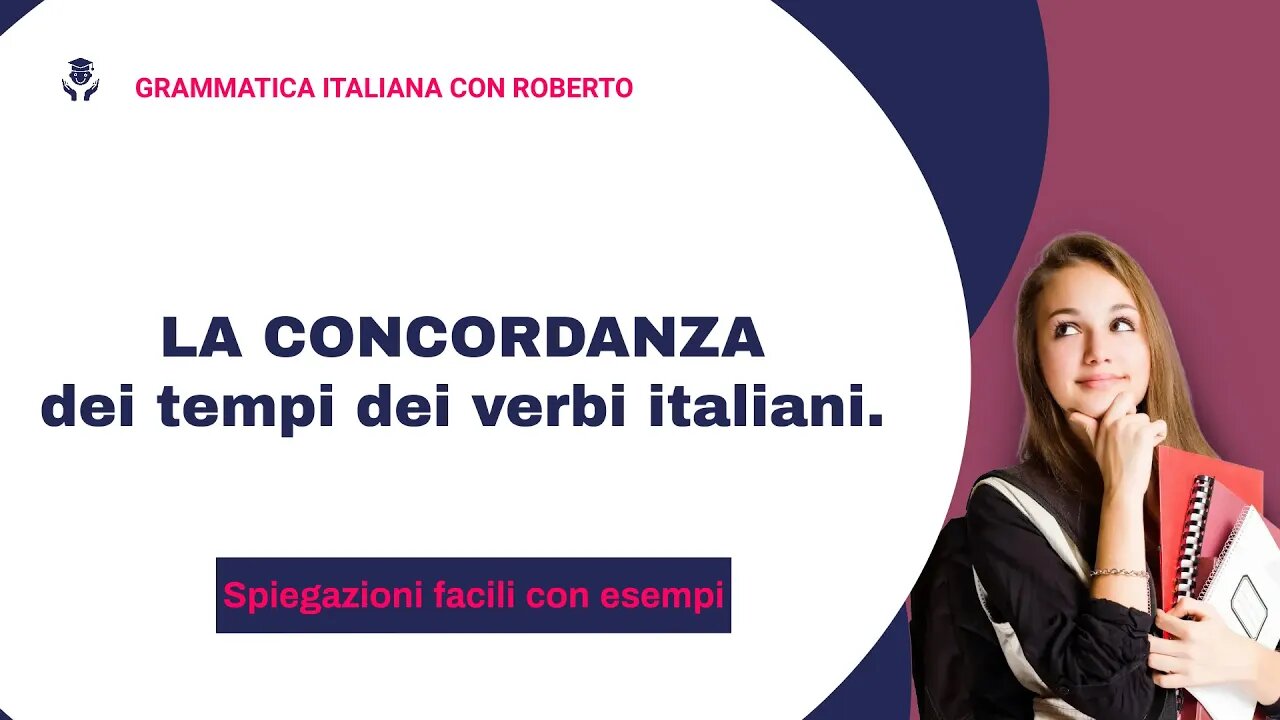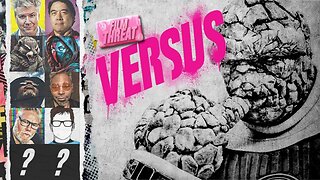Premium Only Content

"Learn how to master the concordance of Italian verb tenses with these simple examples!"
#RobertoBorzellinoLinguaitalianaperstranieri.
The concordance of the tenses of Italian verbs.
The concordance of the tenses of Italian verbs is a fundamental aspect of Italian grammar. When writing or speaking, it is important that verbs are conjugated in the correct tense and that their form matches that of the subjects to which they refer.
In Italian, there are three main tenses: present, past and future. Each can be conjugated in different ways depending on the verbal mode and the type of verb used. For example, the present tense can be conjugated in the indicative, subjunctive, conditional, imperative and infinitive modes. Each verbal mode has its own specific function and is used in certain contexts.
The concordance of tenses is important because it allows us to express the temporal relationships between two or more events. In other words, when talking about a past event, the verb must be conjugated in the past tense; when talking about a future event, the verb must be conjugated in the future tense, and so on. In this way, confusion is avoided and clear and precise communication is ensured.
It is also important to take into account the person to whom the verb refers. In Italian, verbs are conjugated according to person (I, you, he/she, we, you, they/they) and number (singular or plural).
For example, if the subject is plural, the verb must be conjugated plural.
The concordance of tenses can be complicated for those studying Italian as a foreign language, especially since in some languages there is no concordance of verb tenses. However, with a little practice and attention, it is possible to learn how to use Italian verbs in the correct way.
Grammar and text comprehension exercises can be used to facilitate learning. In addition, it is important to read and listen to material in Italian to become familiar with the different verb forms and their uses.
So let's look at some examples to better understand this concept.
Present indicative
The present indicative is the most common verbal tense in Italian and is used to describe present actions or habits.
Example: I eat pizza every Friday.
In this case, the verb "to eat" is in the present indicative tense and agrees with the subject "I."
Past tense
The past perfect is used to describe an action performed in the past that has a relationship to the present.
Example: I had pizza with my friends yesterday.
In this case, the verb "eat" is in the past tense and agrees with the subject "I."
Imperfect
The imperfect is used to describe a past action that took place continuously in the past.
Example: When I was a child, I ate pizza every day.
In this case, the verb "to eat" is in the imperfect and agrees with the subject "I."
Past perfect tense
The present perfect tense is used to describe a past action that occurred before another past action.
Example: When I arrived, I had already eaten pizza.
In this case, the verb "to eat" is in the near past tense and agrees with the subject "I."
Future simple
The future simple is used to describe an action that will occur in the future.
Example: Tomorrow I will eat pizza with my friends.
In this case, the verb "eat" is in the simple future and agrees with the subject "I."
Present conditional
The present conditional is used to describe an action that would be possible if a certain condition occurred.
Example: If I had pizza, I would eat it right away.
In this case, the verb "to eat" is in the present conditional tense and agrees with the subject "I."
In conclusion, agreeing the tenses of Italian verbs is an important aspect to consider in order to construct correct and flowing sentences. Always remember to make the verb agree with the verbal tense and the verbal mode of the main sentence.
The videos in this channel are dedicated to the Italian language and culture. The main topics will be grammar lessons, exercises, dialogues from everyday life, history, geography, fashion, cooking and much more.
My books on Amazon. Level A1/A2 I recommend the following textbooks:
For students of Russian language: https://www.amazon.it/dp/1521583730
For English language students: https://www.amazon.it/dp/1657435474
For students of German language: https://www.amazon.it/dp/B095GJ5WS5
For Chinese language students: https://www.amazon.it/dp/B08YQQWT32
For students of the Brazilian language: https://www.amazon.it/dp/B0B5KVJNJ9
For students at B1/B2/C1/C2 level, I recommend my novels: dictionary, exercises and solutions.
https://www.amazon.it/dp/B08DSVJZNB (Dead End Road)
https://www.amazon.it/dp/B08DSSCRLZ (The Red Jasper)
https://www.amazon.it/dp/B08TW5FLVK (The Curse of the Isle of Cora)
https://www.amazon.it/dp/B095GRWSBR (Militaria)
-
 LIVE
LIVE
Right Side Broadcasting Network
5 hours agoLIVE: President Trump Signs EOs; Pete Hegseth Meets with Netanyahu - 2/5/25
12,736 watching -
 LIVE
LIVE
Dr. Drew
3 hours agoPsychics Investigate DC Black Hawk & Philadelphia Medical Plane Crashes w/ Zach Vorhies + Eddie Conner & Andrew Anderson – Calling Out w/ Susan Pinsky – Ep 166
1,241 watching -
 LIVE
LIVE
In The Litter Box w/ Jewels & Catturd
19 hours agoDemocrats Come Unglued | In the Litter Box w/ Jewels and Catturd Ep. 735 - 2/5/2025
5,244 watching -
 1:44:25
1:44:25
The Quartering
3 hours agoTrump Impeachment, Democrat Insurrection, Massive Scandal At Politico & DC Crash Update!
48.7K31 -
 LIVE
LIVE
Dr Disrespect
4 hours ago🔴LIVE - DR DISRESPECT - KINGDOM COME: DELIVERANCE 2 - FIRST IMPRESSION
3,763 watching -
 37:54
37:54
CryptoWendyO
2 hours ago $0.03 earnedBEST DAY IN CRYPTO HISTORY
301 -
 LIVE
LIVE
Film Threat
6 hours agoVERSUS: FANTASTIC FOUR + CAPTAIN AMERICA + QUENTIN TARANTINO'S EPIC RANT | Film Threat Versus
37 watching -
 9:06
9:06
CryptoWrld
11 hours ago $0.82 earnedHow Nonprofits Use Blockchain Tech
8.87K2 -
 16:38
16:38
SLS - Street League Skateboarding
14 days agoRayssa Leal's Most Clutch SLS Wins Ever! 🥶🏆
73.8K4 -
 1:06:29
1:06:29
Russell Brand
5 hours agoGaza Takeover? Trump’s Bold Plan Sparks Global Outrage – SF532
113K244